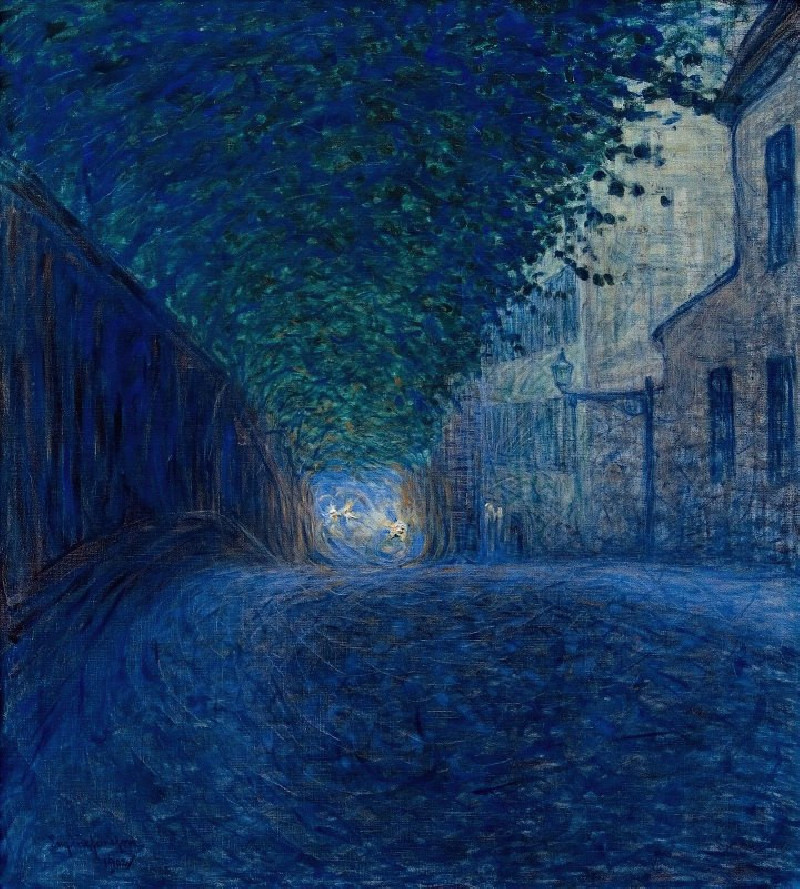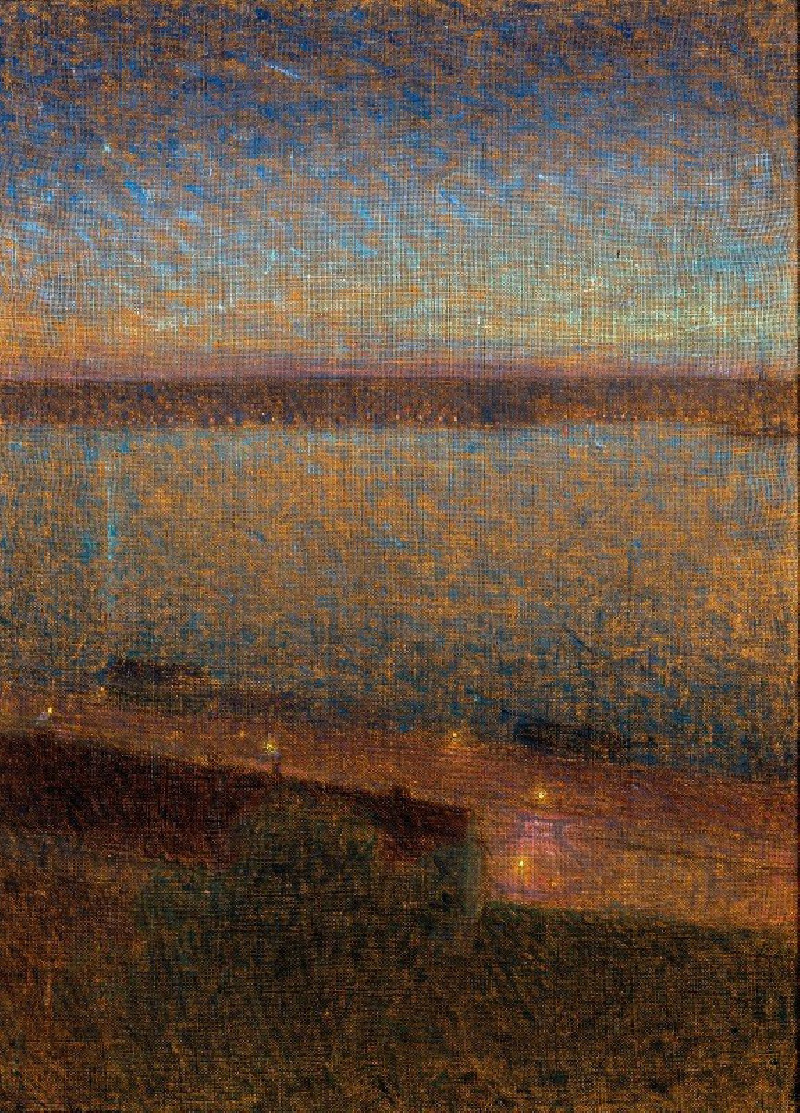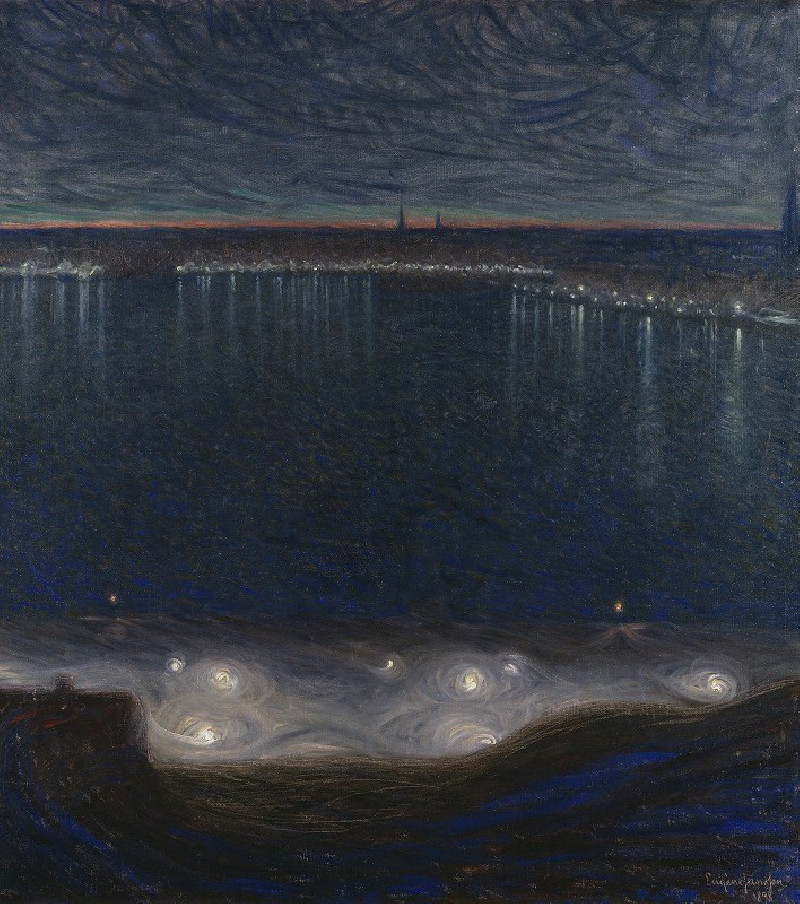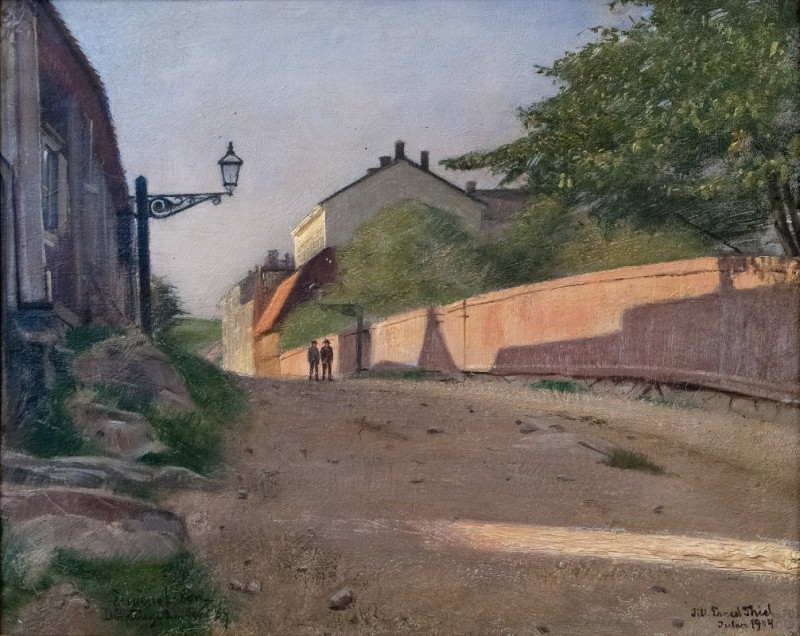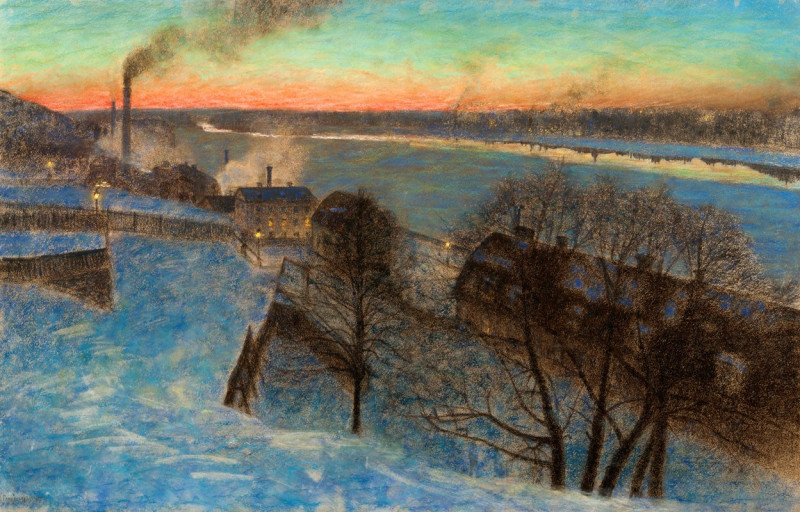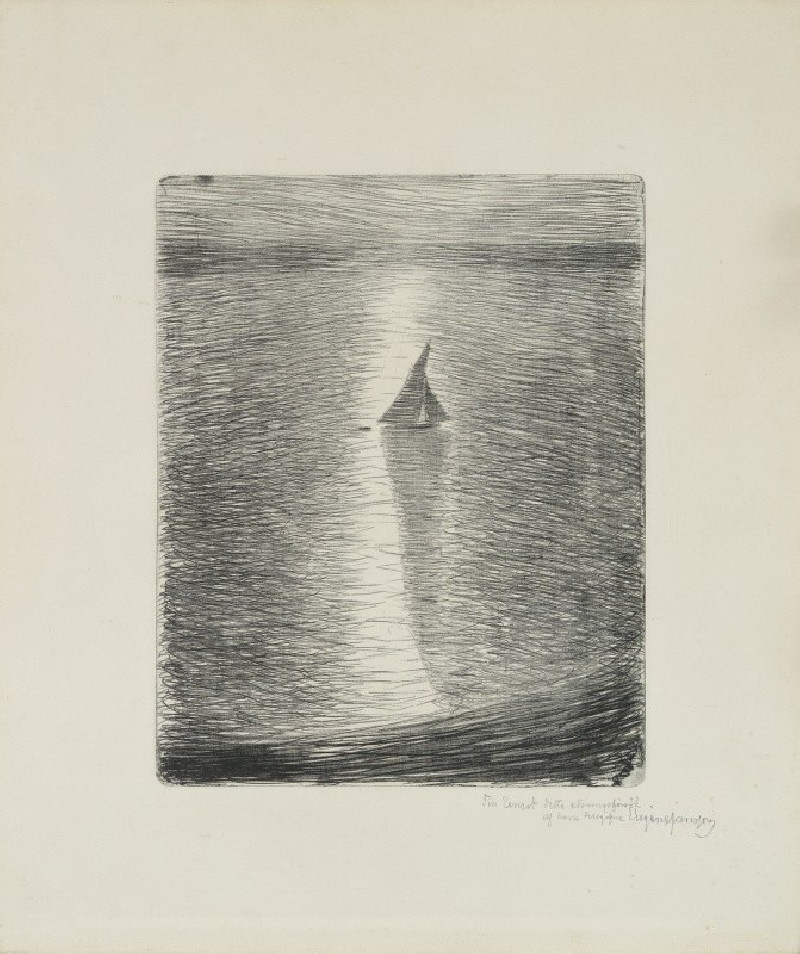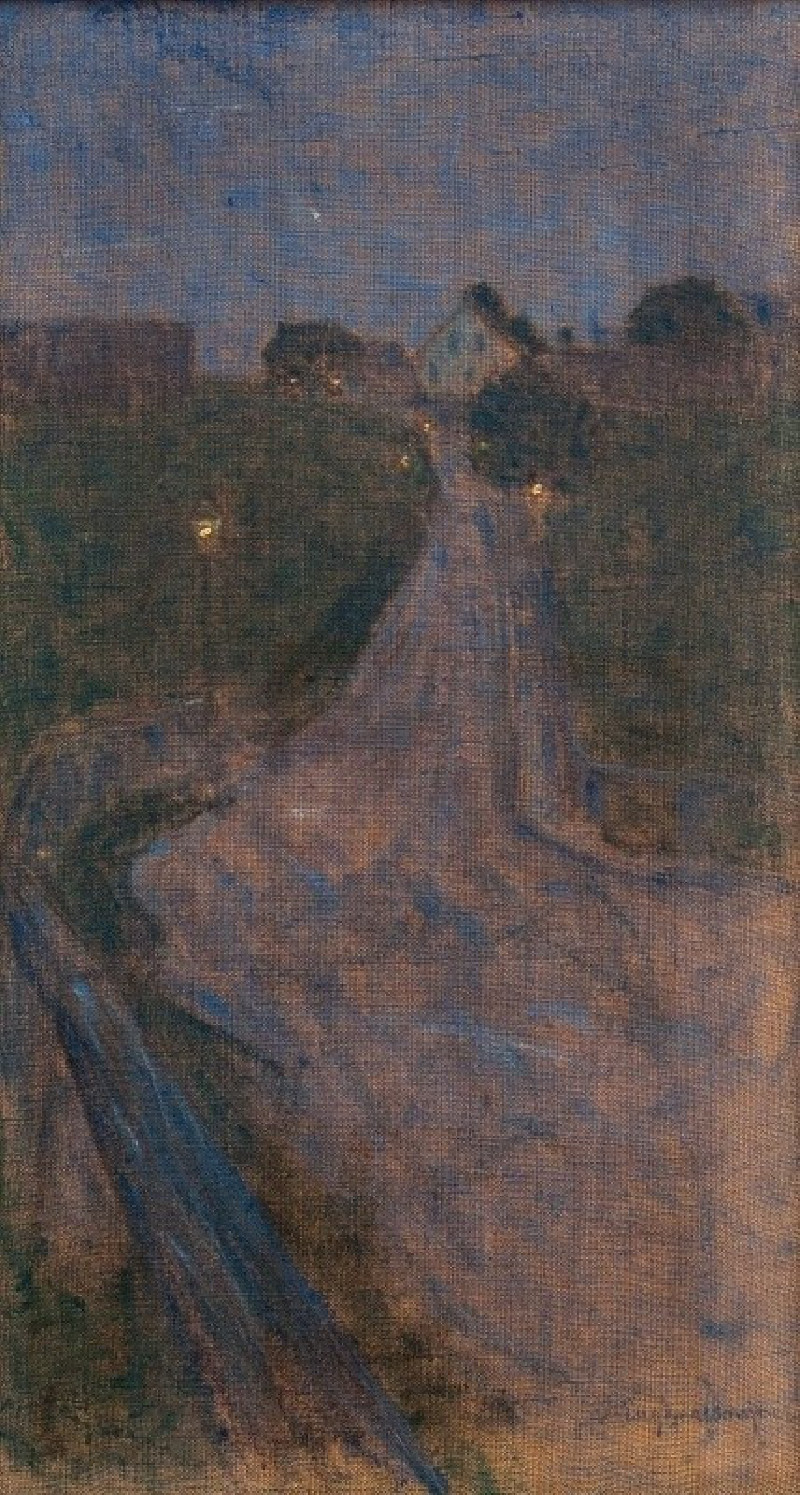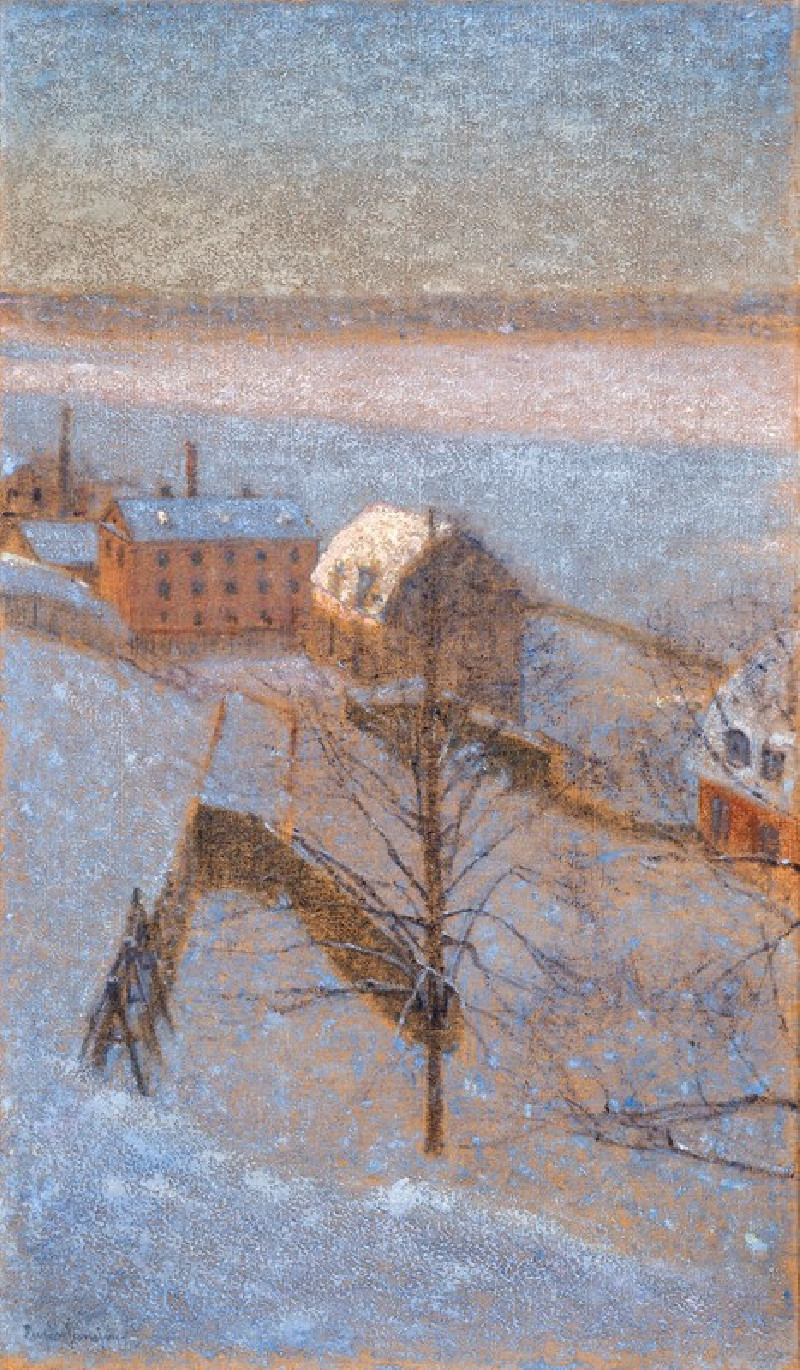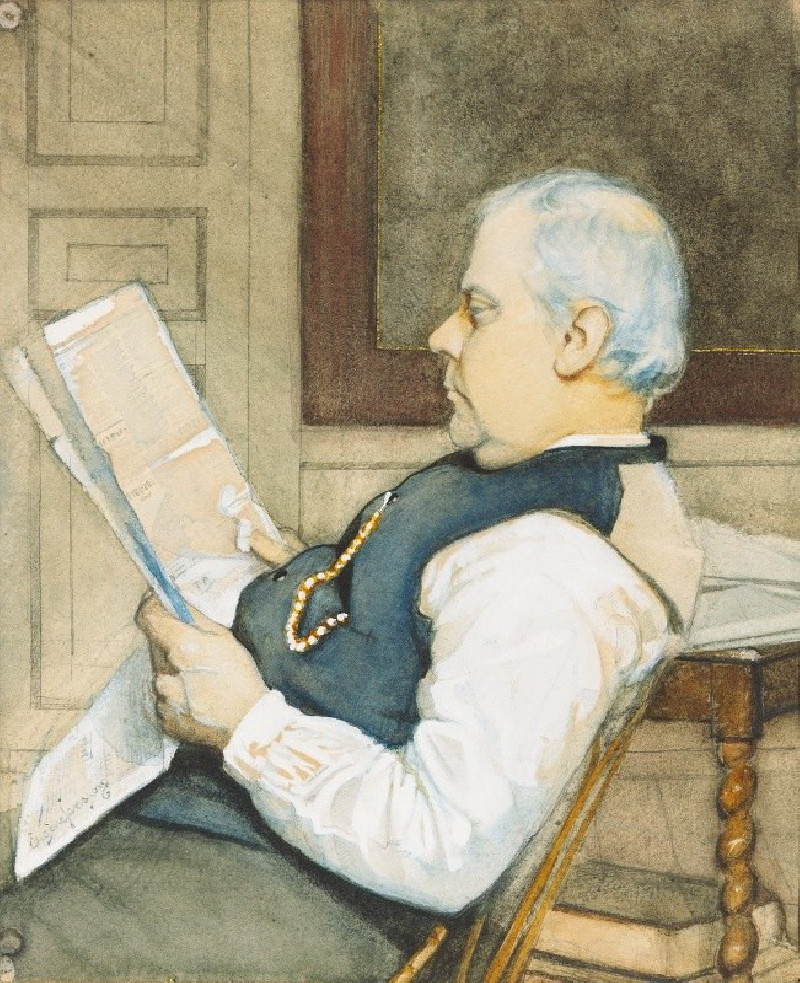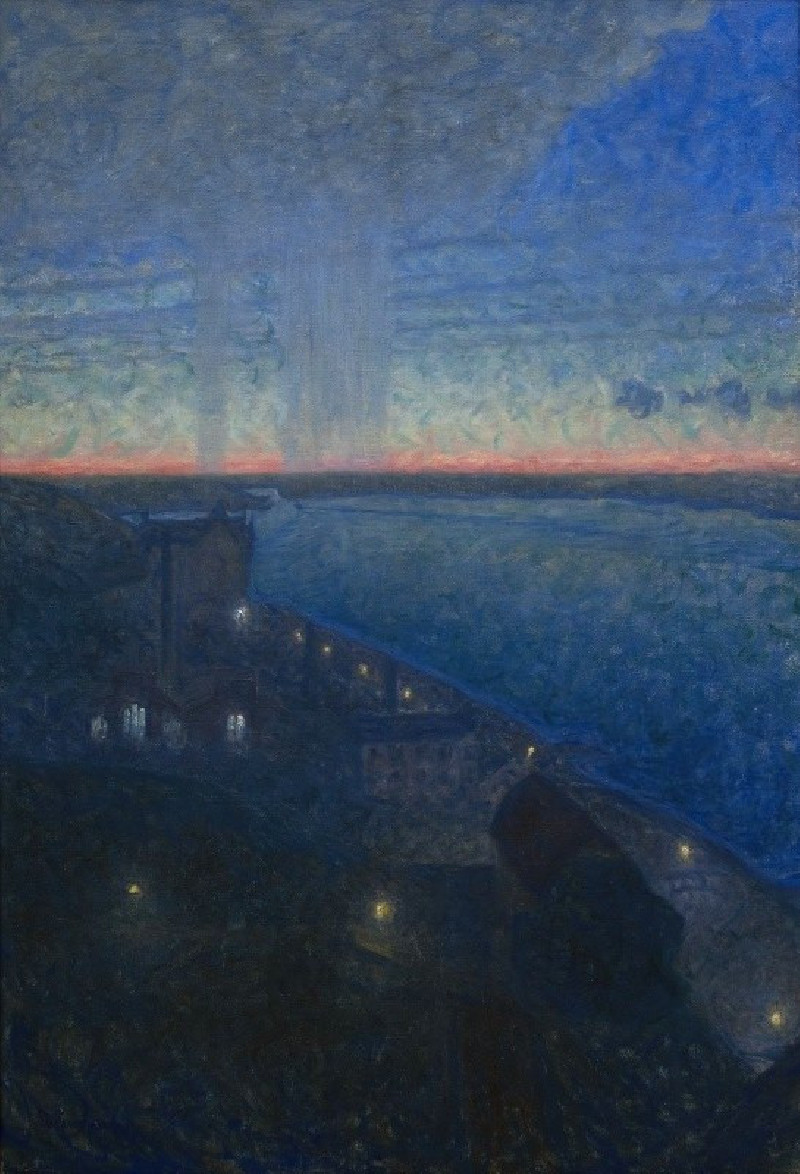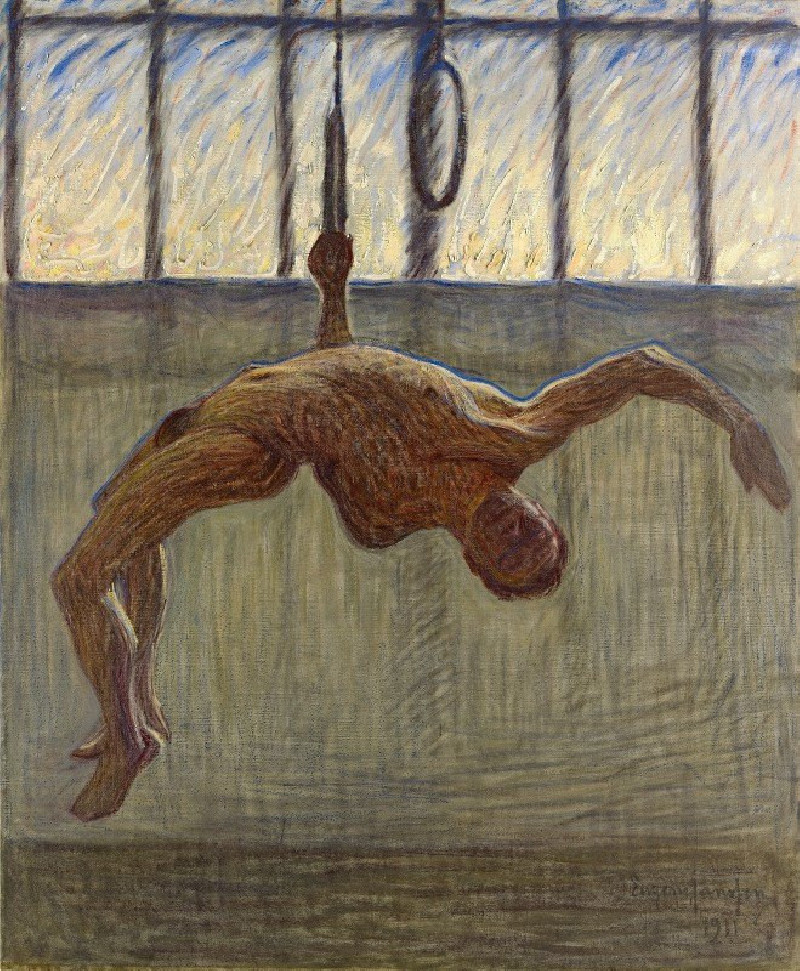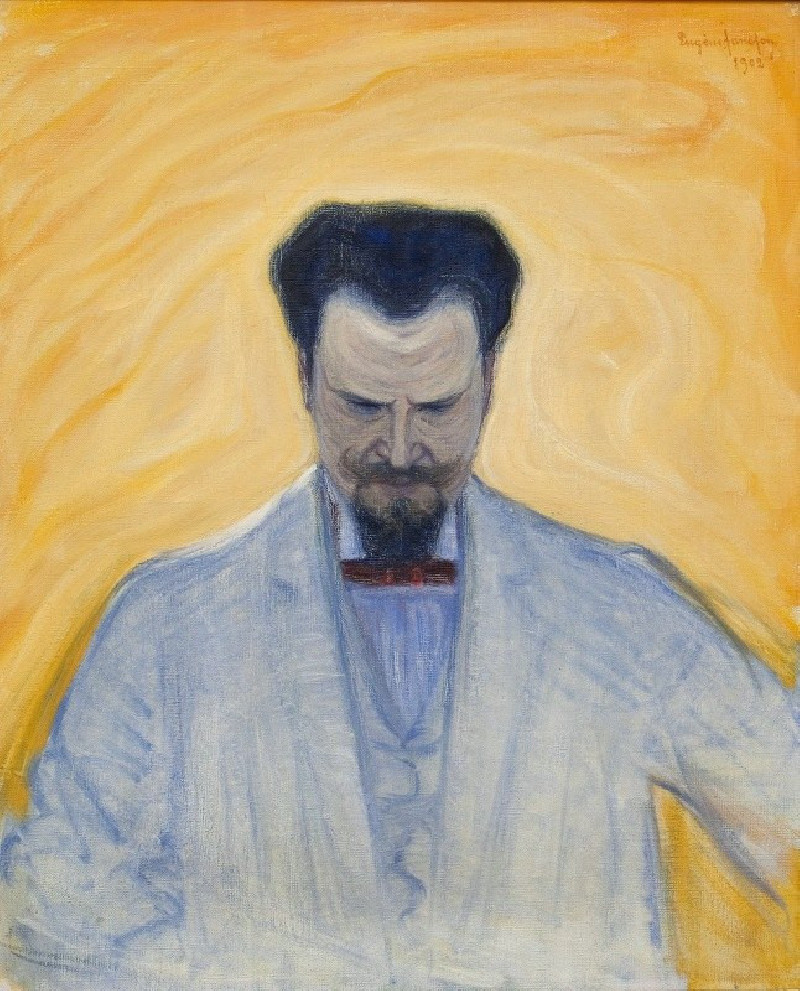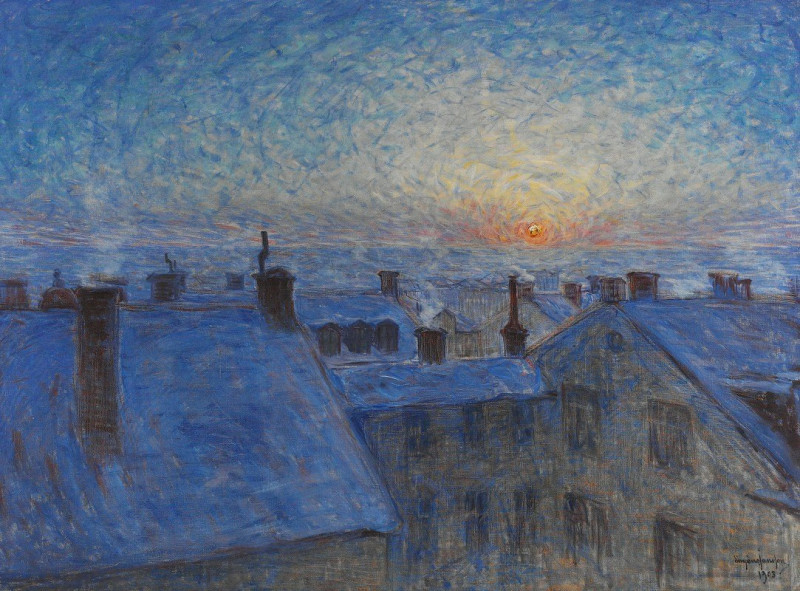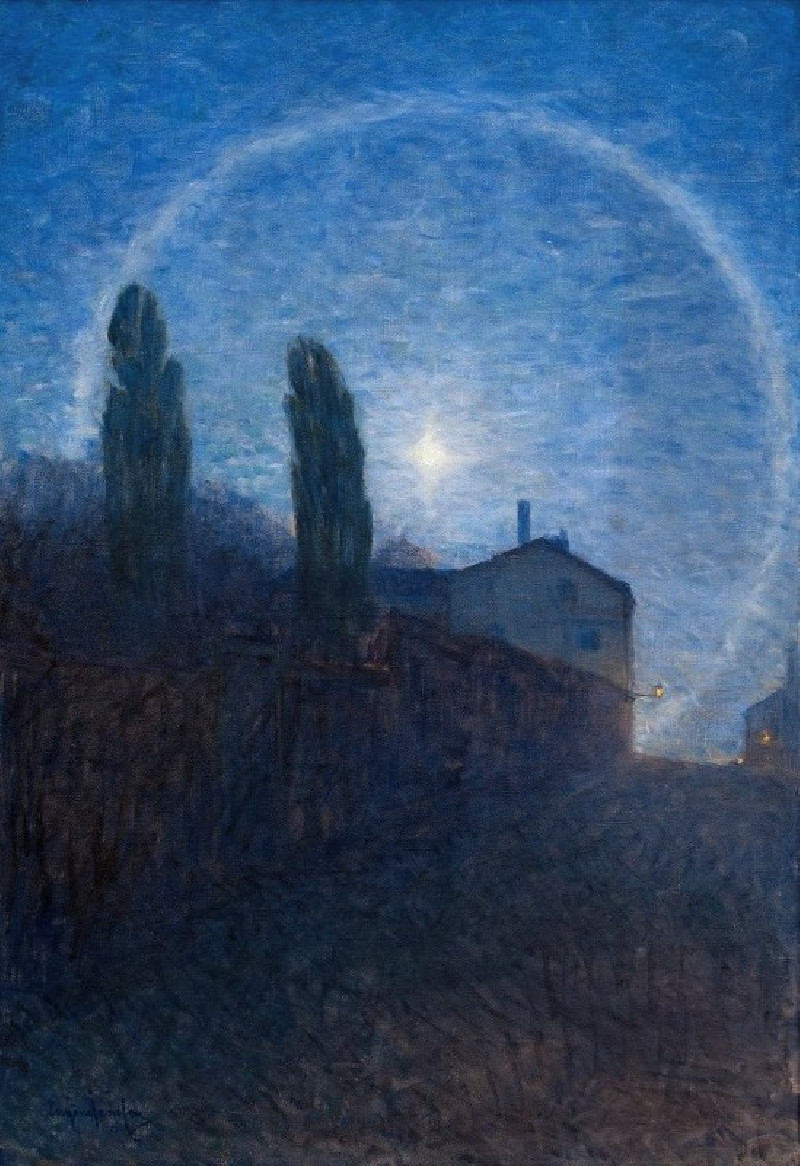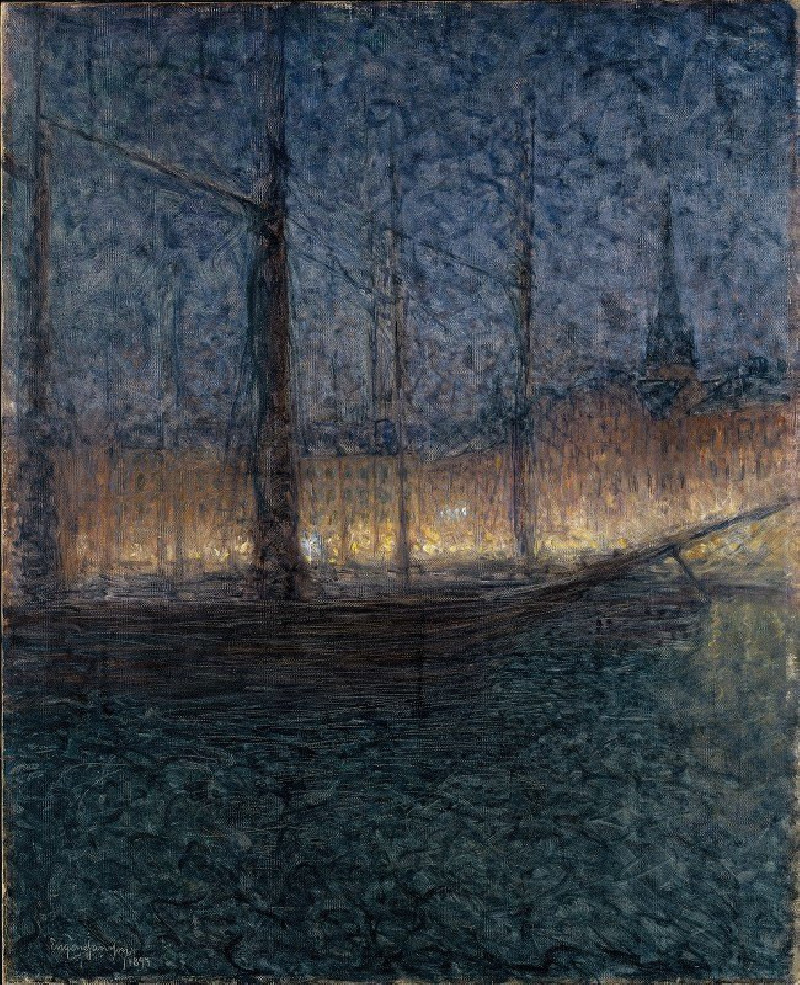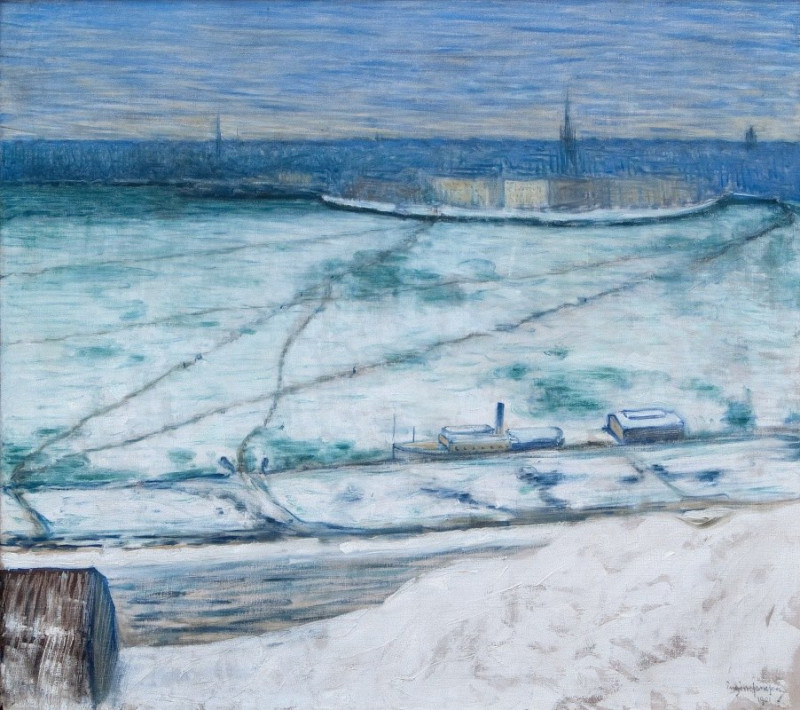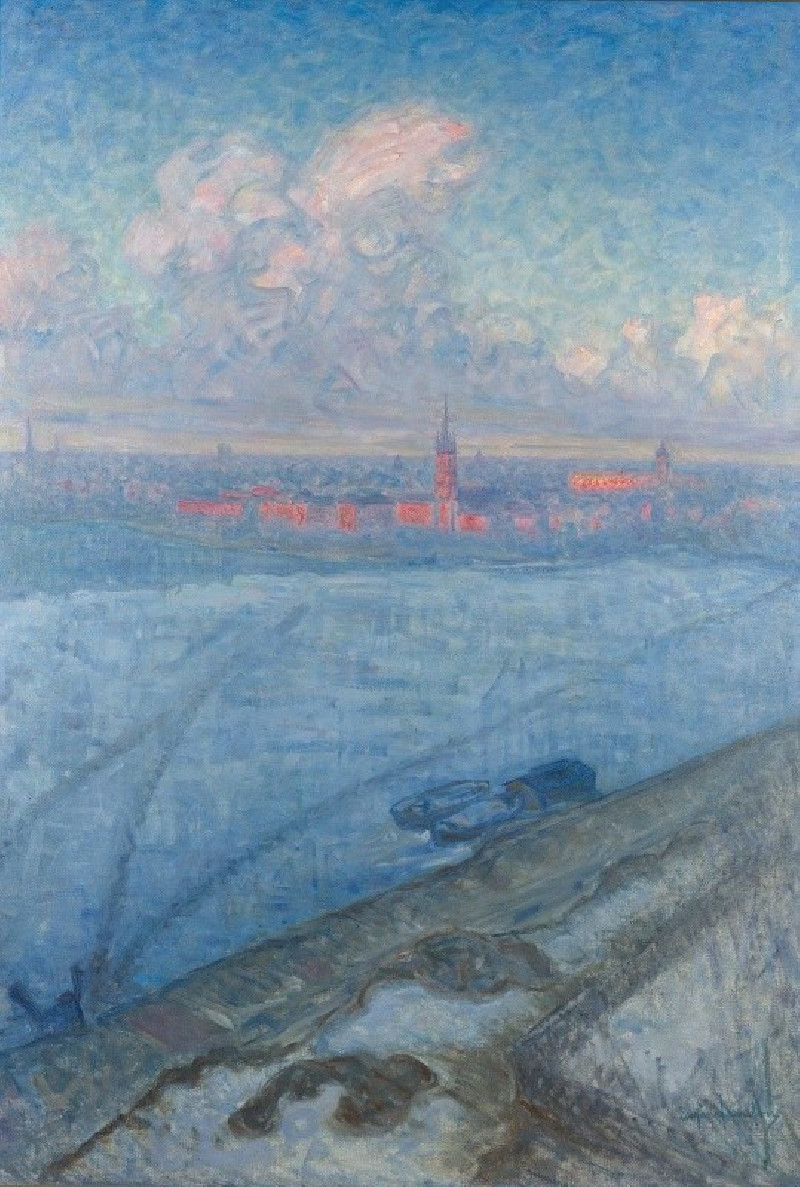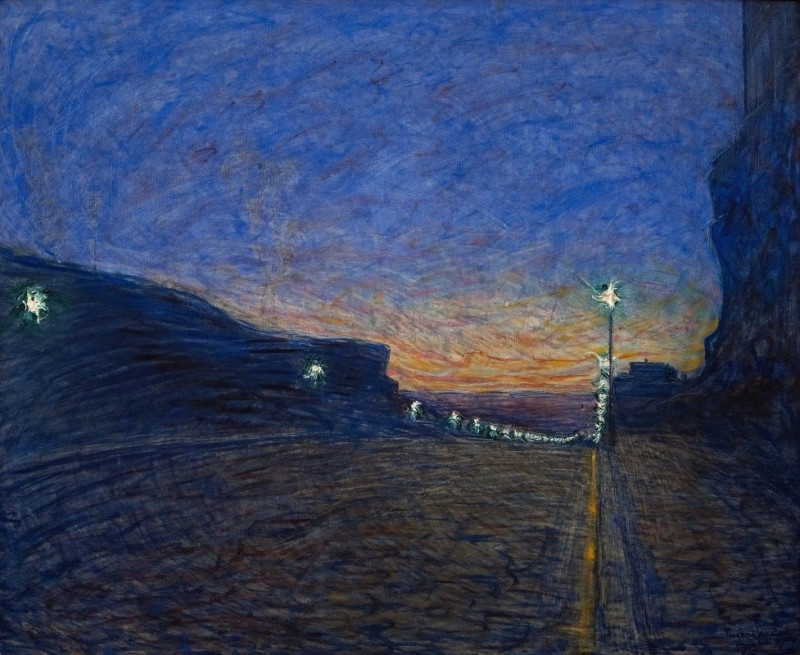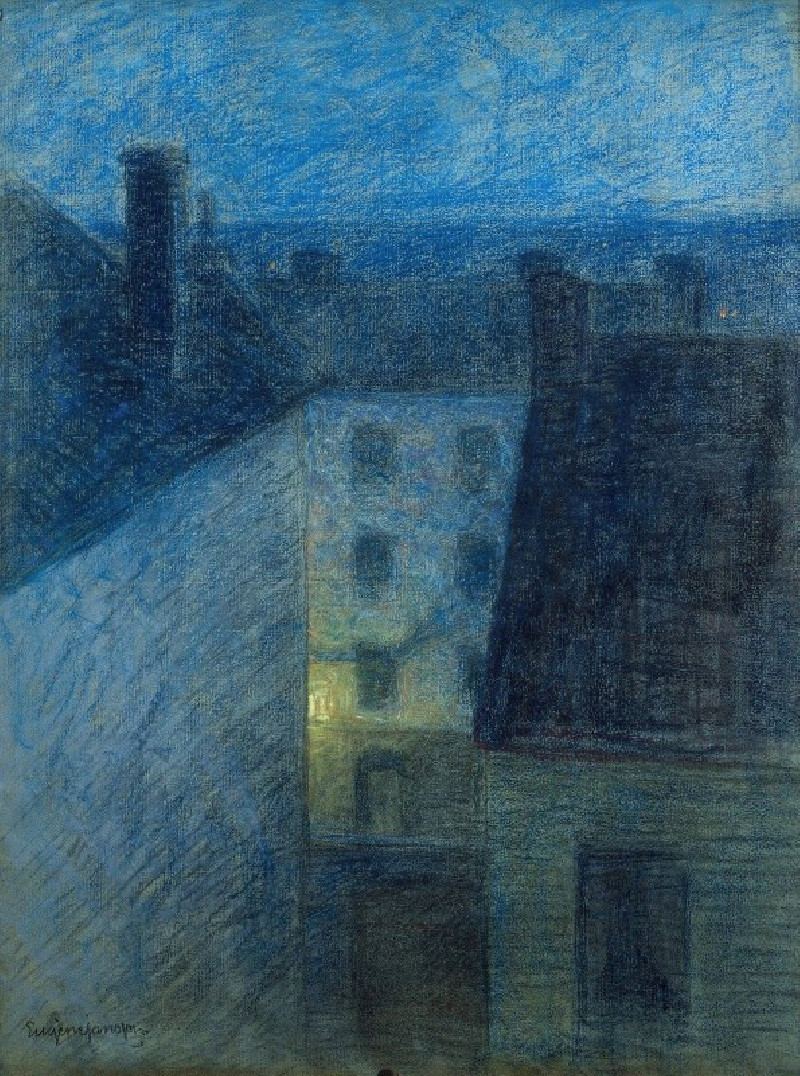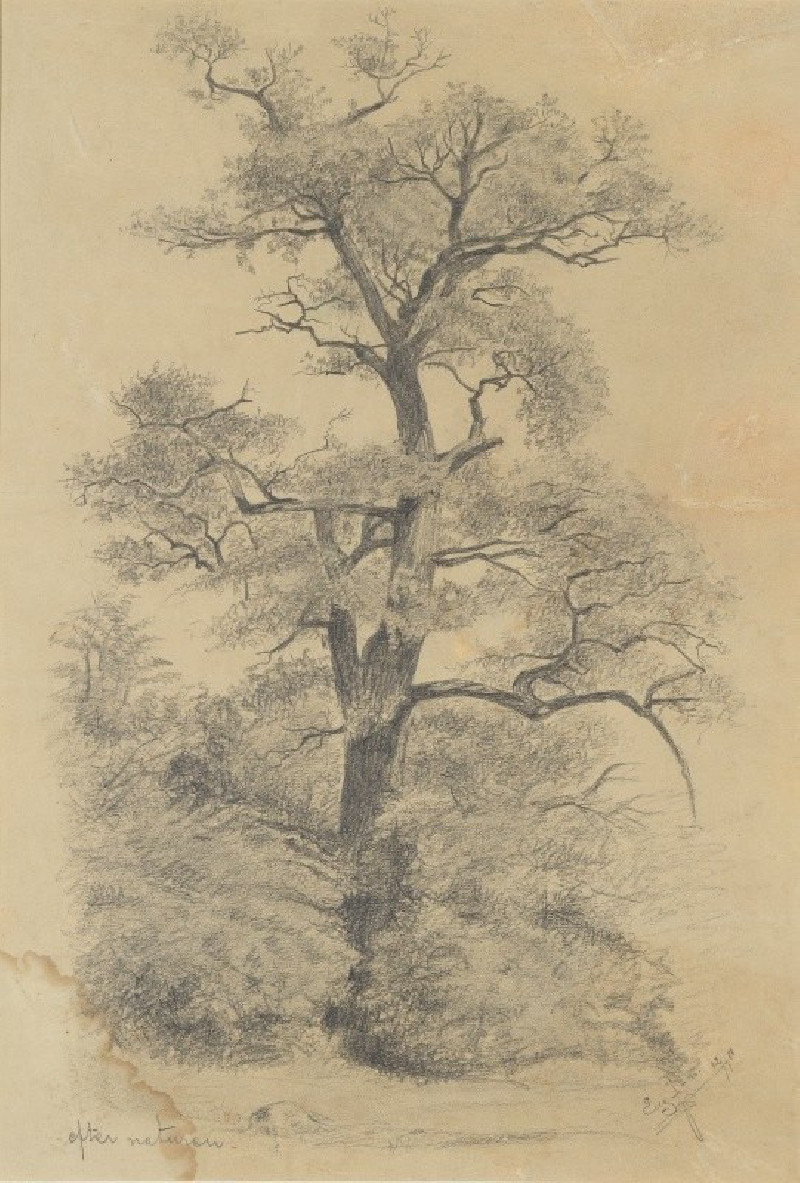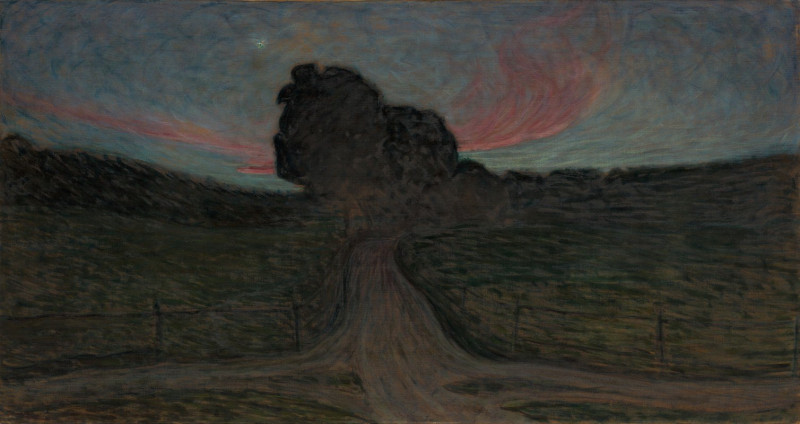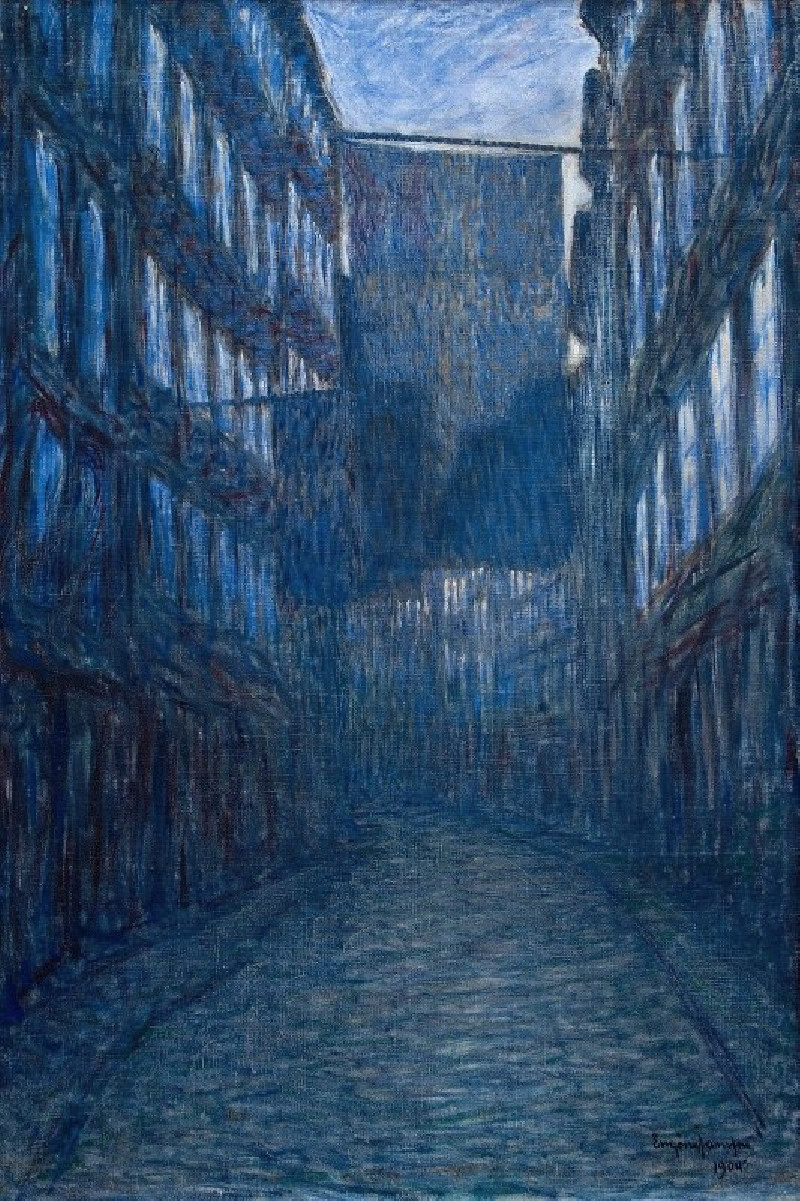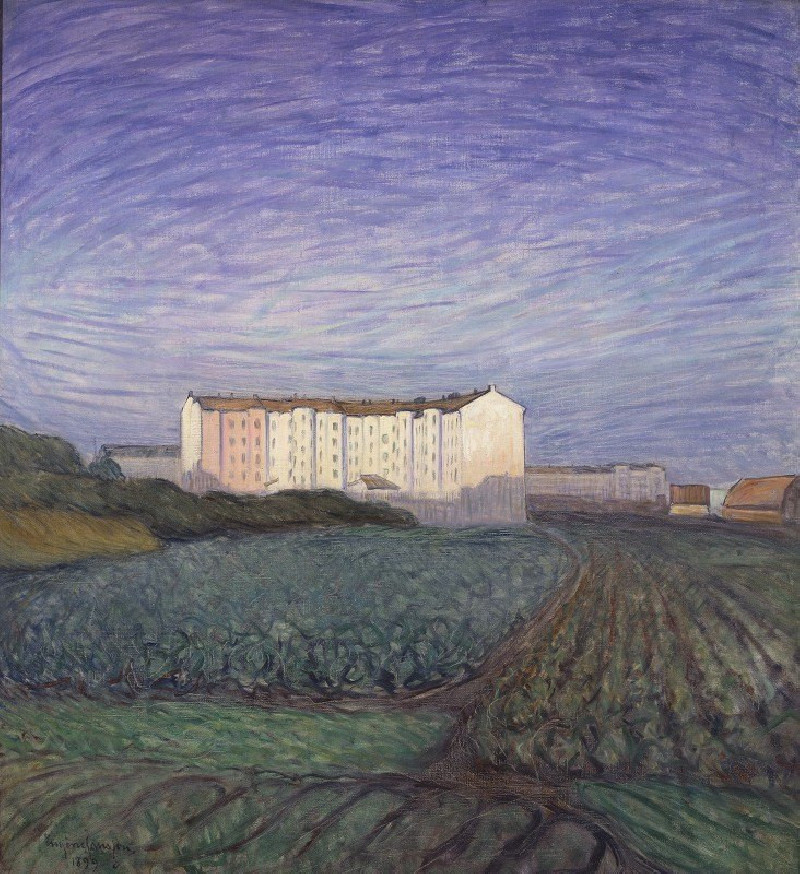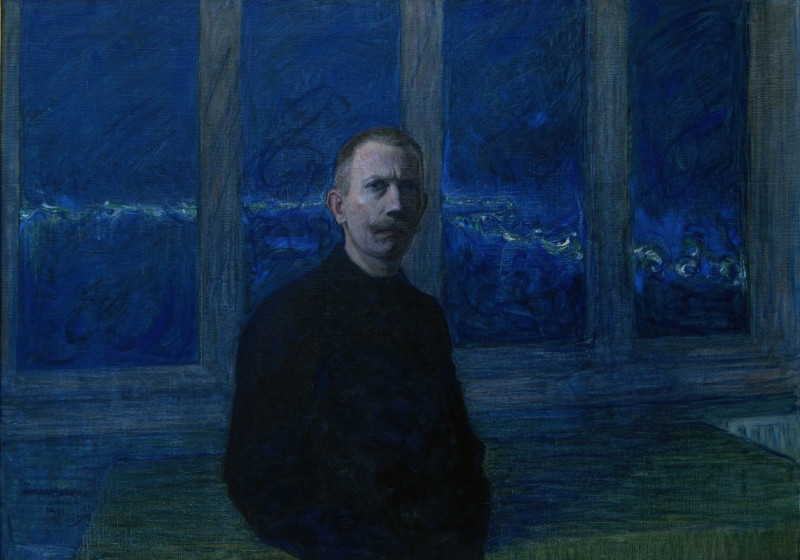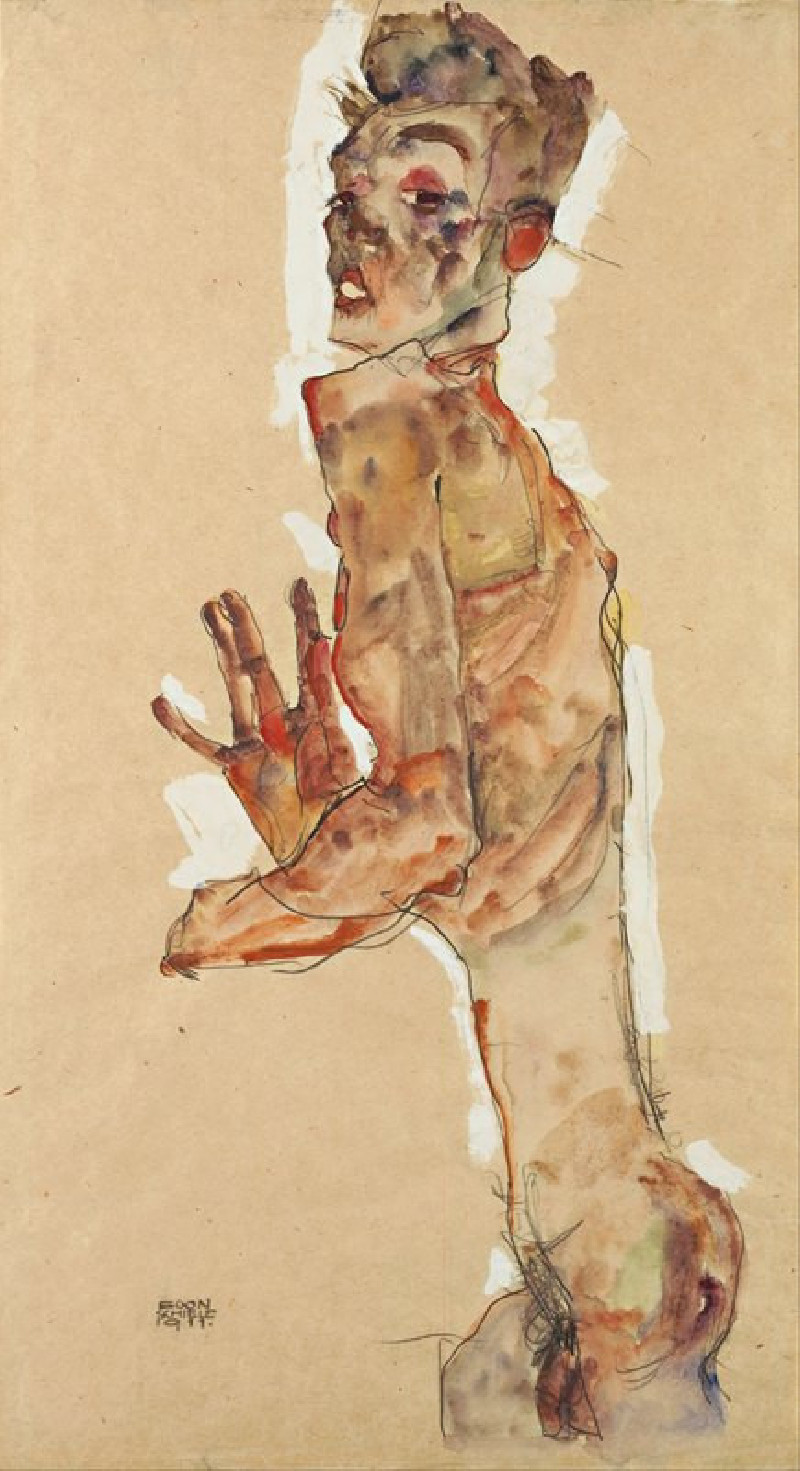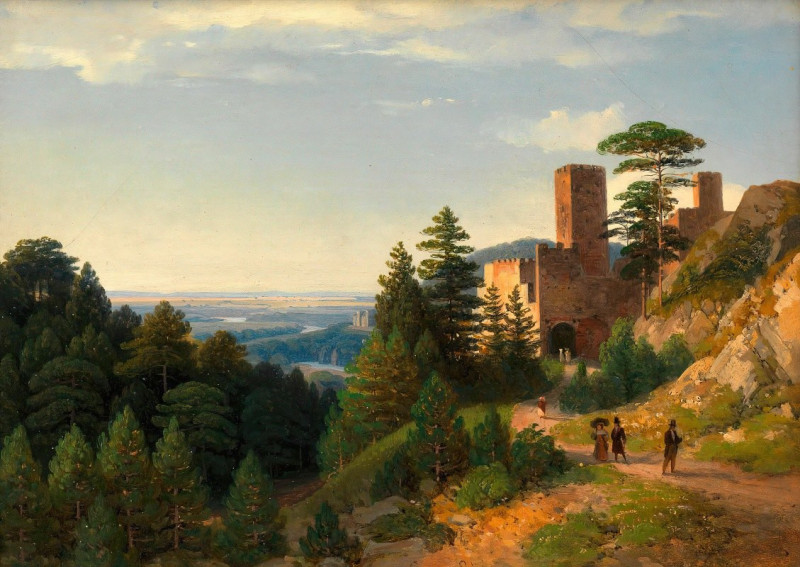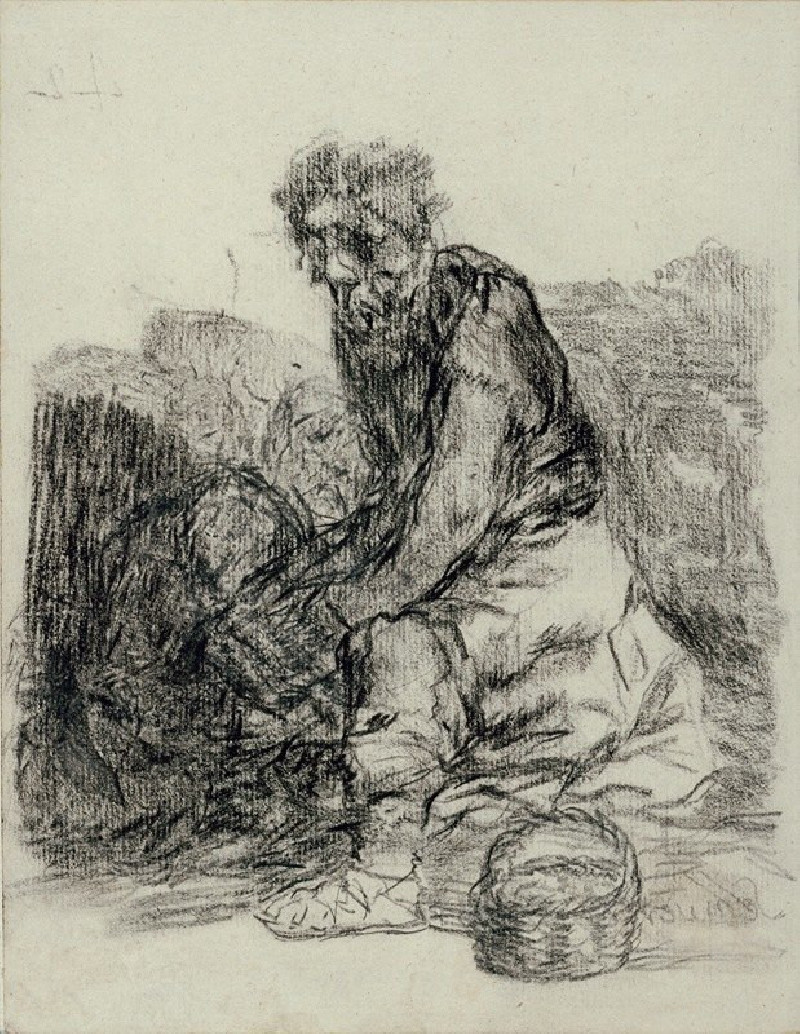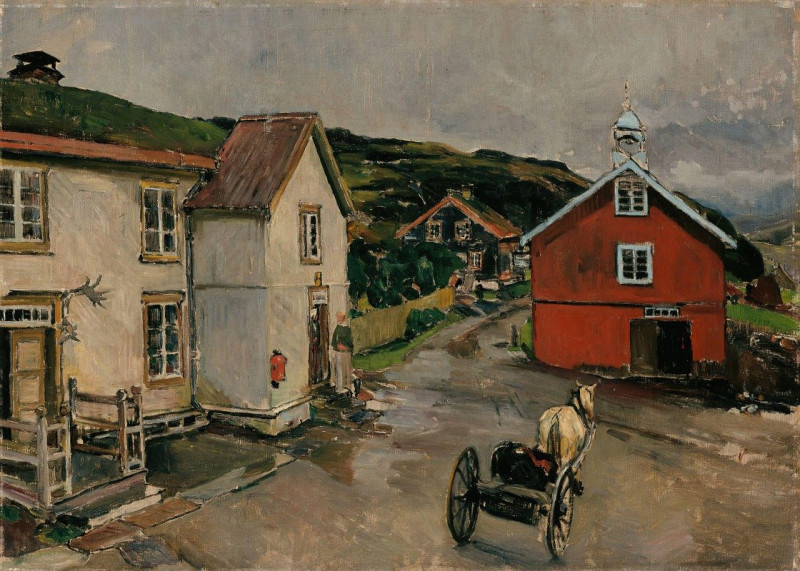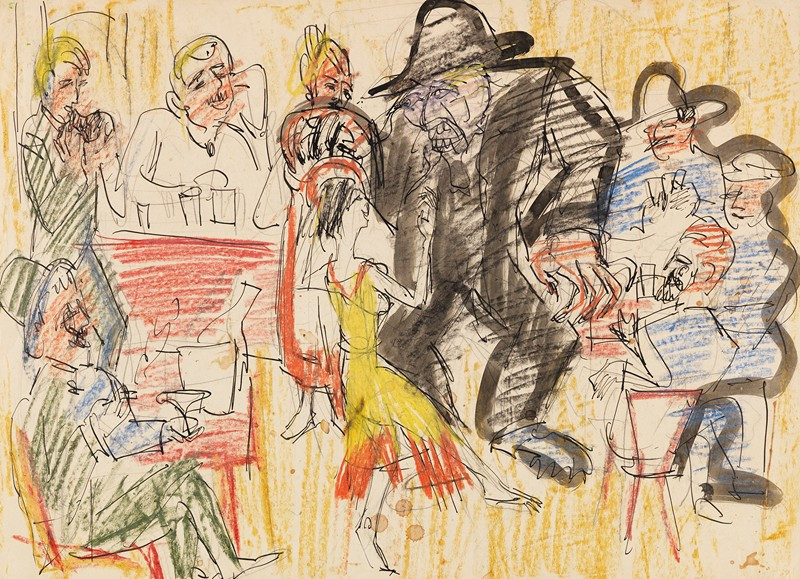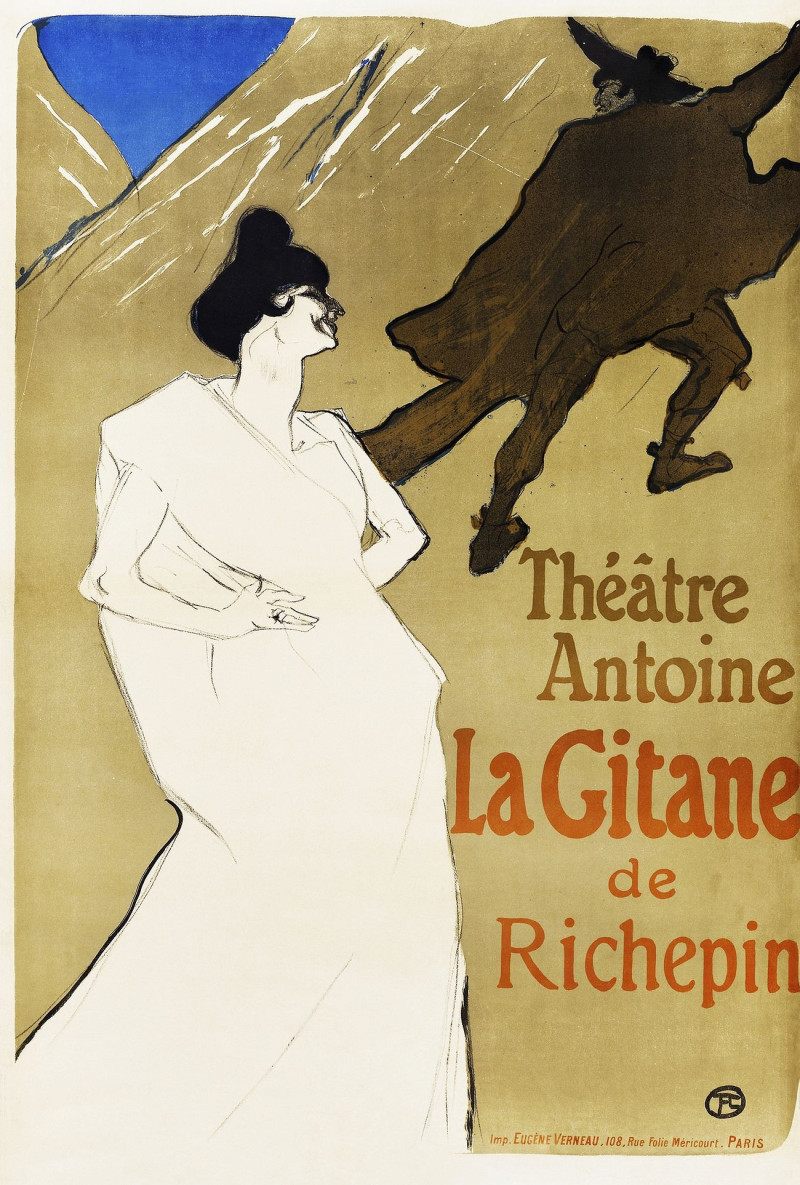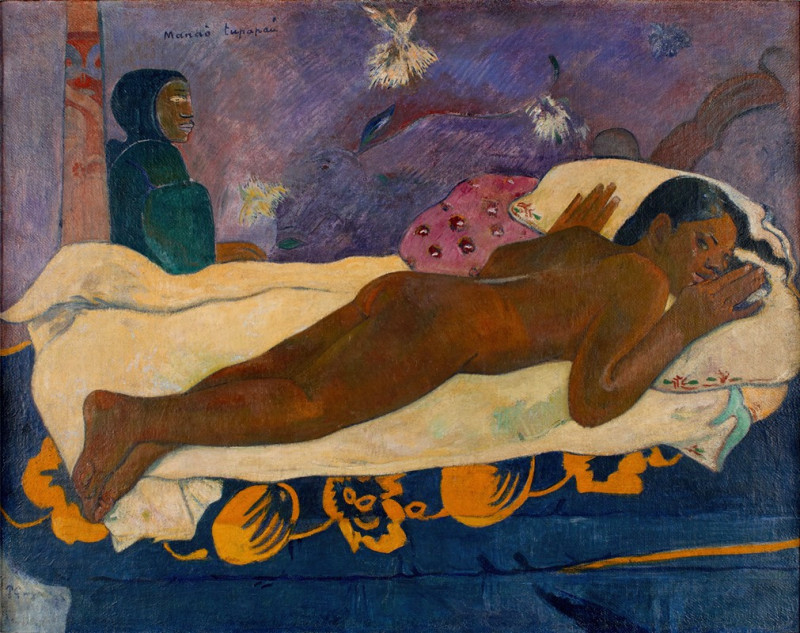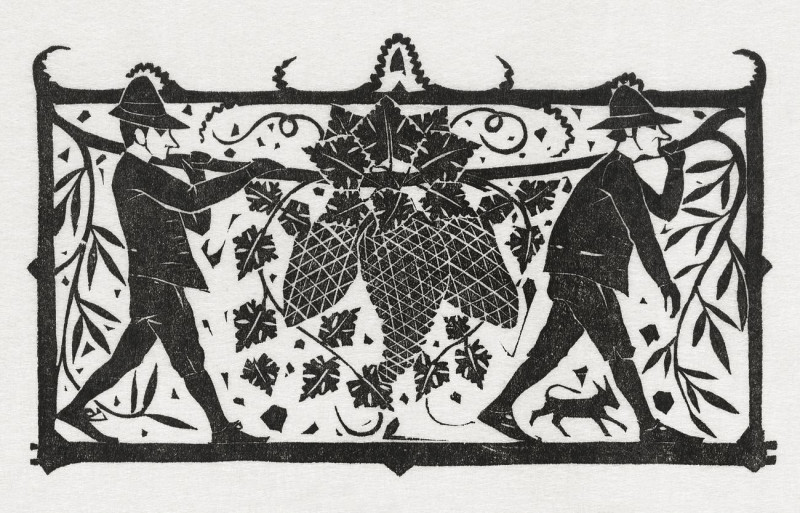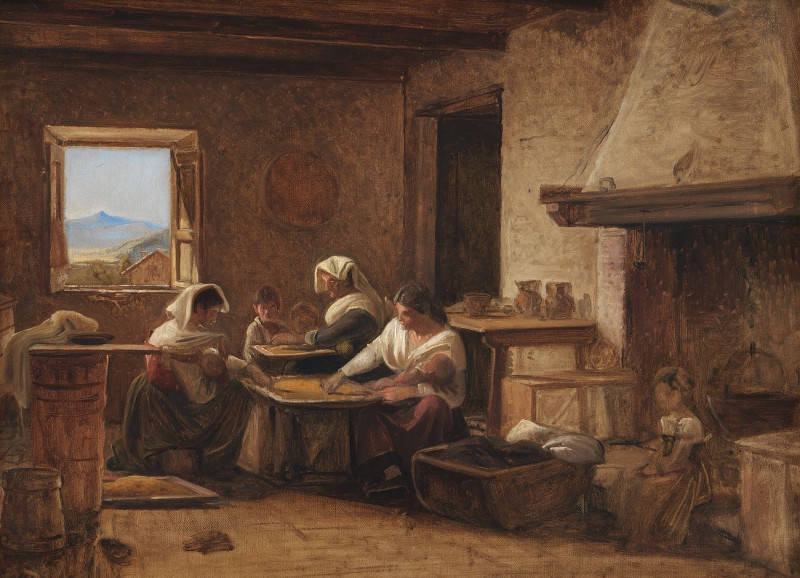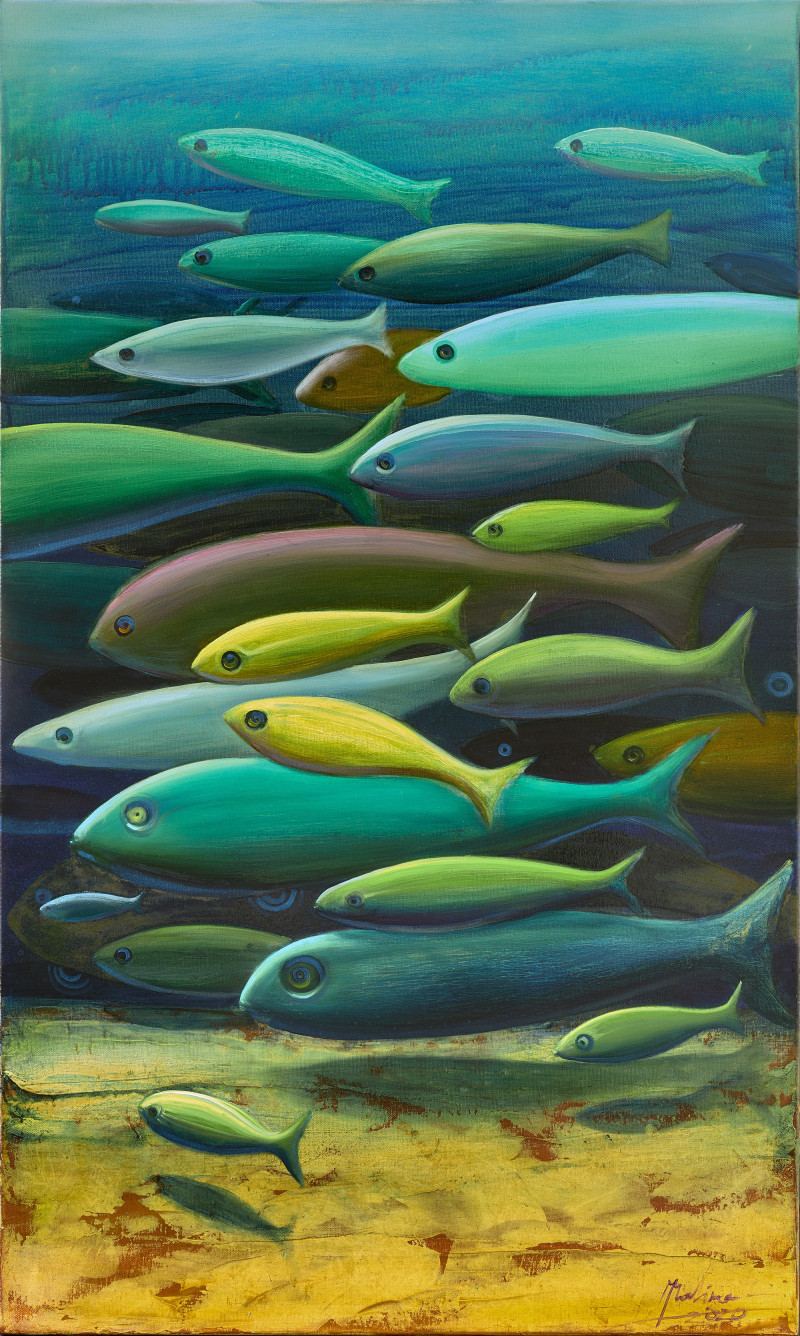At Dusk (1902)
Technique: Giclée quality print
Recommended by our customers
More about this artwork
At Dusk (1902) by Eugène Jansson is a mesmerizing portrayal of a city street bathing in the bluish hue of twilight. This exquisite painting captures a hauntingly beautiful scene where the encroaching night seems to envelop everything. Here, Jansson, primarily known for his nocturnal landscapes and vivid use of blues, employs a rich palette dominated by deep blues and hints of cooler tones to express the serene yet profound atmosphere of dusk.The perspective draws the viewer down a narrow street framed by buildings on one side and a dense tunnel of leafy canopies on the other, which arch over to form a natural vault. The use of light and shadow is particularly striking; a few distant, glowing lights suggest life beyond the immediate loneliness and stillness that dusk often brings. The pavement reflects this dim light, guiding the eye towards these points of warmth and serving as a subtle suggestion of human presence without directly depicting any figures.This painting evokes a sense of peaceful solitude and the quiet moments of reflection that dusk can bring.
Delivery
Returns
Eugène Fredrik Jansson (18 March 1862, Stockholm – 15 June 1915, Skara) was a Swedish painter known for his night-time land- and cityscapes dominated by shades of blue. Towards the end of his life, from about 1904, he mainly painted male nudes. The earlier of these phases has caused him to sometimes be referred to as blåmålaren, "the blue-painter".

